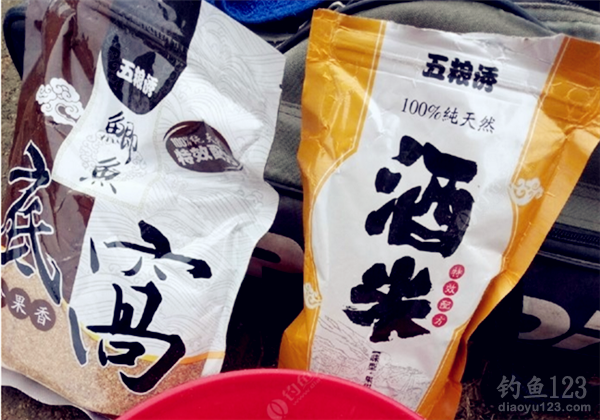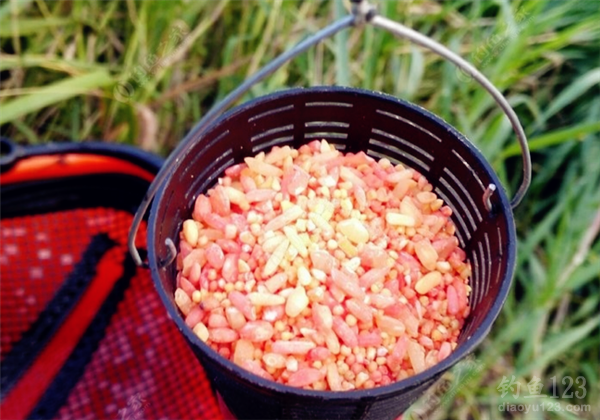Four practical tips for bait nest material
source:Fishing 123 Author: The Most Handsome Star in the Sky Published on: 2018-10-29 17:04:41678
In fishing, whether it isBlack pitor wild rivers or lakes, anglers face the problem of applying nest materials, making nests (making nests). There are many types of bait nests. As long as the purpose is to lure fish to eat bait, we can regard it as bait nests. It can be the seeds of plants (corn, wheat, millet, rice, bean cakes, etc.) or animals (screws,Red worm) can also be commercial bait (granules, powder bait, etc.). The method of making nests should not only target the fish situation, but also the environment. You cannot beat too much or not. Even if the fish is dense, you should also use the bait to make nests through the fishing bait by pumping the rod frequency. So, let me talk about the usual methods of making nest materials.

1. Hand throwing bait nest material
Hand-dumping material to make a nest, also known as shell nest. It is to add water to dissolve the powdered nest or pellets, then pinch a ping-pong ball or fist-sized bait ball into the den with your hands (you can also carry some wine, rice, corn and other particles to keep the nest). This kind of throwing nest is suitable for powder bait nests, such as the crucian carp bottom nests and carp bottom nests in our common fishing homes. The particles can also be dissolved into a ball in water and thrown into it. Because it is large in size and still has a certain inertia after entering the water, when throwing into the fishing point, try to throw it to about half a meter behind the float (or fishing point) (between the float and the shore). The specific throwing position needs to be adjusted according to the depth of the fishing point and the flatness of the bottom. If there is a slope at the bottom, the bait nest material should not be spherical or thrown closer to ensure that the nest material is close to the fishing point.

2. Build a nest
Frequent wild fishing orTraditional fishingFishermen are not unfamiliar with nesting machines. They use nesting machines slightly tied to the long rod to accurately pour the nesting materials into the fishing spot. This nesting form is usually aimed at particles and is not easily dissolved by water, such as wine and rice, corn, etc. Due to its high accuracy, the nest volume is easy to control, and it is deeply loved by wild fishing enthusiasts.
3. Lead belt nest
This method of making nests is to hold the powdery nest material (with a certain viscosity) tightly on the lead and bring the nest material into the fishing point through a casting rod. The accuracy is relatively higher than that of the shell nest and lower than that of the nest machine to make nests. When making a nest, you should pay attention to throwing the bait into the fishing point when throwing the rod, and do not throw it all over the rod, otherwise it will easily cause the bait nest to fall off outside the fishing point.

4. Hand rod draws the nest (bad, cannon)
Whether it’s a black pit orWild fishingIn the waters, hand rods are a way to make nests that many fishermen who are not afraid of hard work. By throwing the bait on the double hooks into the fishing spot with rhythmic frequent throwing of a rod. This method of making a nest has many advantages, such as accurate nesting, not easy to disturb fish, bait atomizes and spreads quickly, and can detect fish entering the nest in time. The most commonly used hand rod holes to draw nests is the popular cannon bait. You can also directly use the bait you fish for yourself. When throwing the rod, try to throw the hook bait into the fishing spot (do not throw the rod all over). The frequency is generally controlled at about 5-10 rods per minute (or the float sinks into place and lifts the rod).

5. Skills for bait nest material
The above four nesting methods are the most common and practical nesting techniques at present. If you find that the fish mouth is small during fishing, or you usually need to repair the nest in time after two or three hours of fishing.
I won’t talk about other nest-making methods here, and I will focus on the nest-making skills of shell nests. Because shells are most likely to disturb the fish among the above methods of making nests, they cannot scare away the fish in the nest, so some skills are still needed:
1. Throw it into the den close to the water skin to repair the nest to avoid disturbing the fish in the underwater nest.
2. The amount of nest replenishment should be reduced compared to the amount of nests for the first time, and the bait ball should also be smaller, which will also reduce disturbances to the fish.
In fact, the purpose of the above nesting forms is to measure the nest material and bring it into the fishing spot. Fishermen can also use it in combination. For example, before fishing, bomb the shells, and then fish. The lead belt nest material is used in the fishing spot in the middle to reduce disturbance to the fish. I hope fishermen will learn and use it.
Original articles from Diaoyu 123, reprinting may not be done without permission! Violators will be prosecuted!
- Related Articles
-
Bad nest recipes for fishing in natural waters
How to use bait nest method correctly
How to make bait nest material for wild carp fishing
Simple analysis of the configuration techniques of bait nest material
A brief analysis of homemade bait nest techniques
Bad nest material and nest making tips for wild fishing





